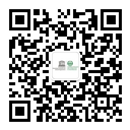Introduction
The 2030 Agenda for Sustainable Development opened a new chapter in the long struggle towards achieving gender equality. Its commitment to ‘leave no one behind’ expresses the conviction that boys and girls, men and women should benefit equally from development. It envisages a ‘world in which every woman and girl enjoys full gender equality and all legal, social and economic barriers to their empowerment have been removed’.
‘Realizing gender equality and the empowerment of women and girls will make a crucial contribution to progress across all the Goals and targets. The achievement of full human potential and of sustainable development is not possible if one half of humanity continues to be denied its full human rights and opportunities. Women and girls must enjoy equal access to quality education, economic resources and political participation as well as equal opportunities with men and boys for employment, leadership and decision-making at all levels. We will work for a significant increase in investments to close the gender gap and strengthen support for institutions in relation to gender equality and the empowerment of women at the global, regional and national levels. All forms of discrimination and violence against women and girls will be eliminated, including through the engagement of men and boys. The systematic mainstreaming of a gender perspective in the implementation of the Agenda is crucial.’
TRANSFORMING OUR WORLD: THE 2030 AGENDA FOR SUSTAINABLE DEVELOPMENT (§20)
While the fifth Sustainable Development Goal (SDG) is focused on gender, other goals also support the empowerment of women. The inter-relatedness of the different goals sends a strong message about the realization of gender equality in different sectors. For example, gender equality in education cannot be achieved only through education-specific efforts; it also depends on interventions in other sectors. At the same time, progress toward gender equality in education can have important effects on equality in employment, health and nutrition.
The Education 2030 Framework for Action, a tool aimed at helping the international community achieve SDG 4 on education, explicitly recognizes gender equality as a guiding principle linked to the realization of the right to education. It states clearly that girls and boys, women and men, must be equally empowered ‘in and through education’.
In this sixth Gender Review, in a series that began in 2011, the Global Education Monitoring Report team maintains the focus on a broad conception of gender equality that extends beyond counting boys and girls in classrooms. The review’s first part examines disparities in participation and skills, in education and political leadership positions, and in selected aspects of infrastructure and curricula. It also examines gender issues in professional development by exploring the role of education in three other SDGs: those concerning agriculture, health, and water and sanitation. The second part of the review analyses institutions, laws and policies to explore ways to determine and enforce accountability for gender equality in education.













